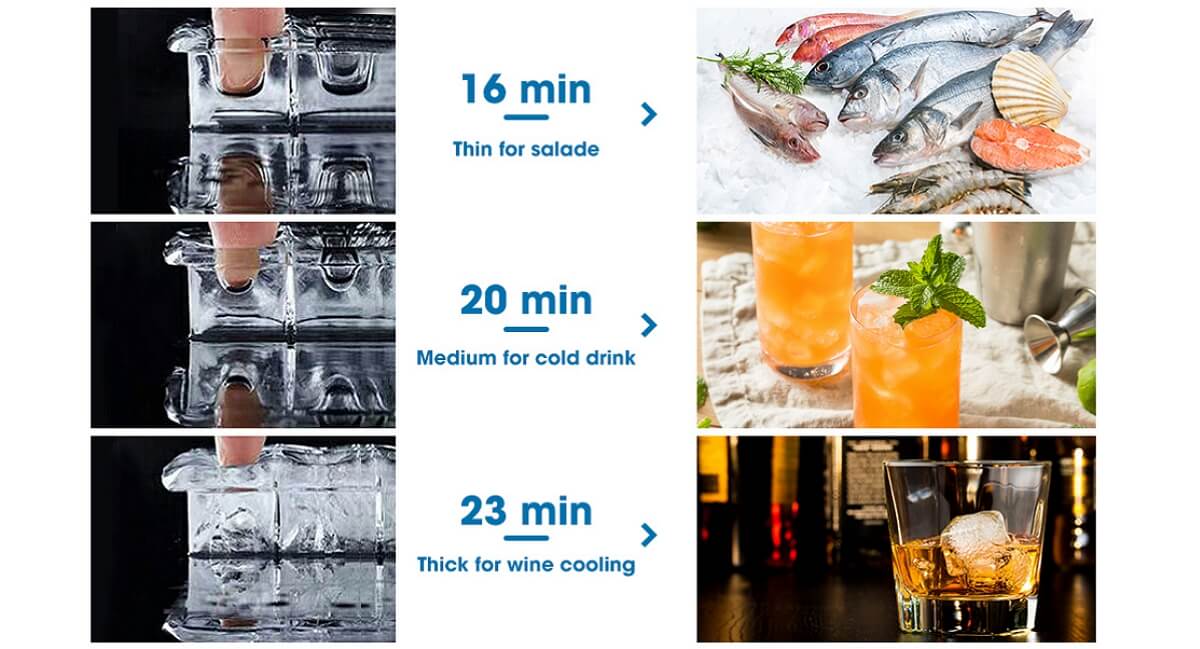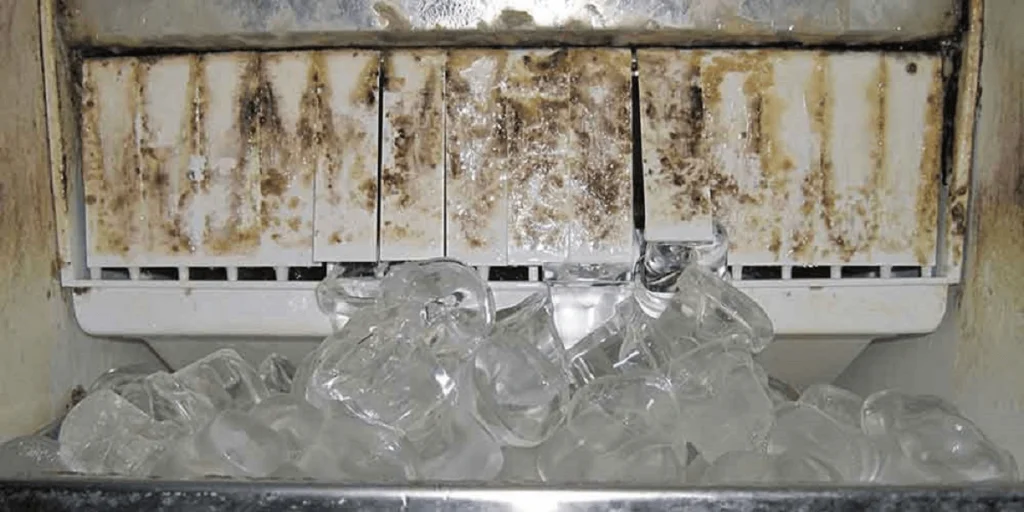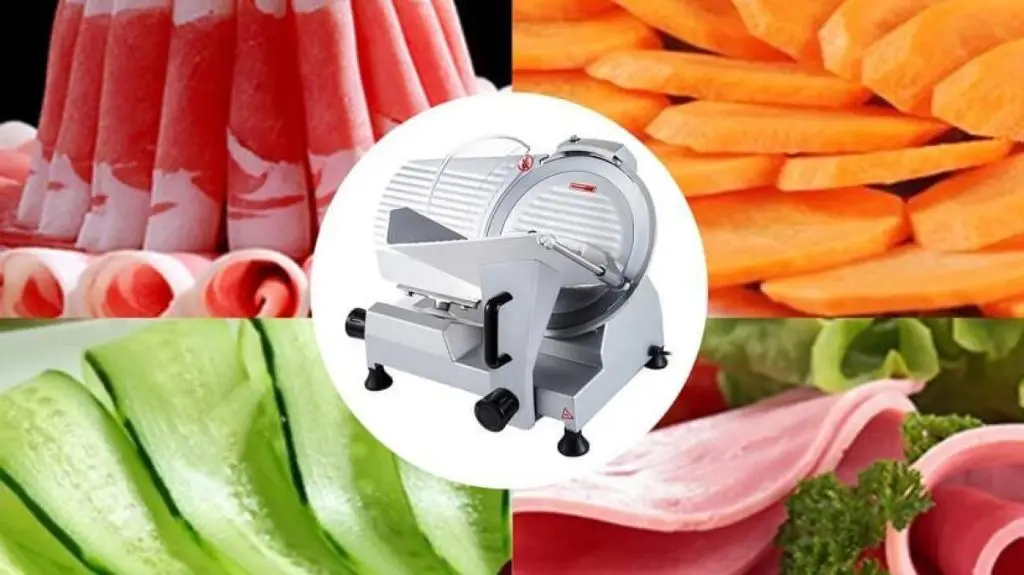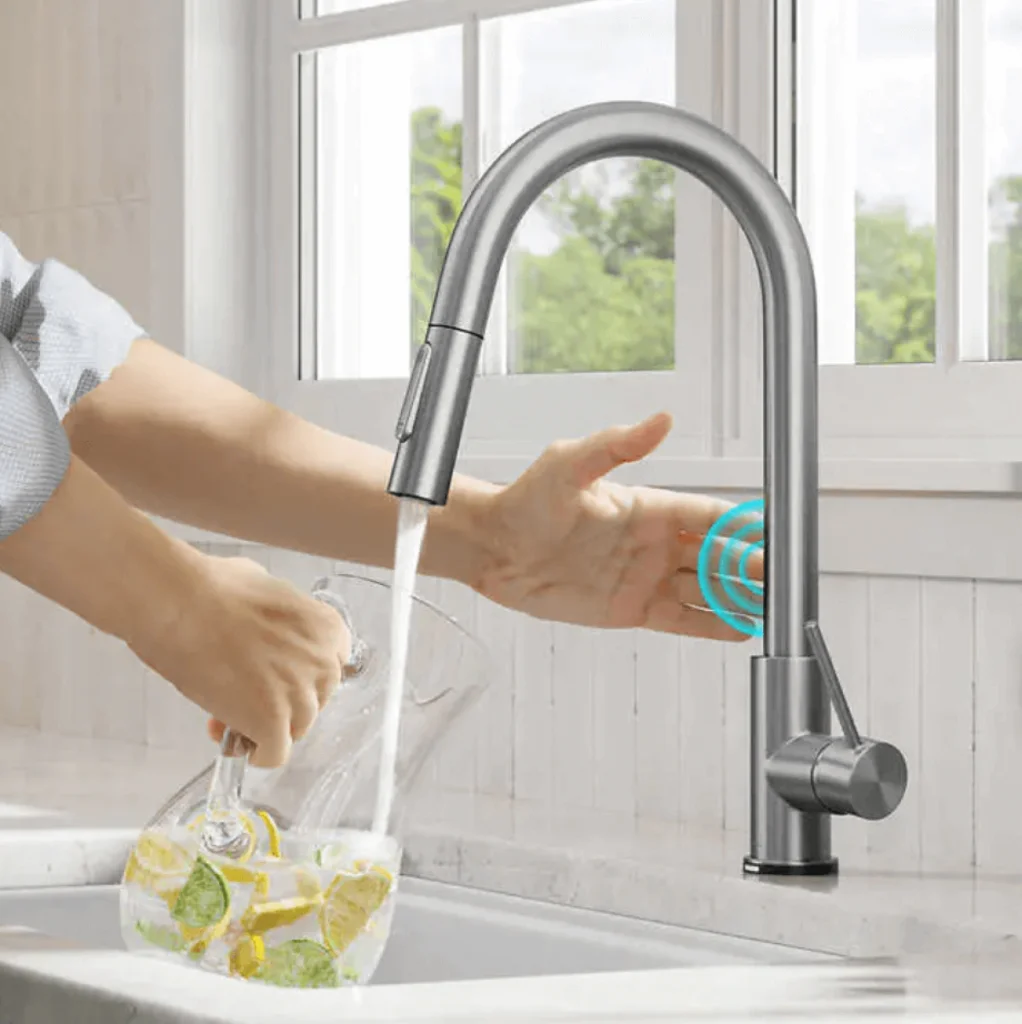Spotting mold in your ice machine isn’t a very pleasant sight. It is not something owners of an ice maker would want to see often. But the mold may find its way inside an ice maker anyway. Getting rid of mold is crucial for your health as well as for your equipment’s longevity.
In this article, we will help you understand the sources of mold in ice machines, spot the signs of mold, and recognize the dangers to your health and machine alike. We’ll also walk you through the things you need to clean out the mold effectively, followed by easy steps to get your ice machine sparkling again.
So, let’s get straight into addressing those nagging concerns on how to prevent mold in an ice machine.
Table of contents
Where Does Mold Come from in Your Ice Machine?
Mold in your ice machine isn’t just gross; it’s a sneaky intruder that turns your machine into its personal penthouse. The main culprit? Moisture. These machines are like tropical getaways for mold spores because of the constant damp environment.
But wait, it’s not just about the moisture. Poor cleaning habits can roll out the red carpet for mold and bacteria to move in. When you neglect regular cleanings, bits of organic matter left behind become a feast for these unwanted guests.
Last but not least, let’s talk airflow—or lack thereof. Limited ventilation gives mold spores free access to settle down and multiply within those hard-to-reach areas of your ice machine.
Signs There is Mold in Your Ice Machine
Mold loves dark, damp places, and your ice machine might just be its next luxury condo. Spotting mold early can save you from a multitude of health risks and mechanical failures.
Unusual Smells or Tastes
If your ice starts tasting like it was scooped out of a swamp or had an odd smell, that means you have mold in the ice machine. This sign is often the first alert for many that something’s amiss inside their machine.
A funky taste or smell usually means the mold colonies have grown large enough to start affecting the ice quality directly. It’s crucial to act swiftly at this point to prevent further contamination.
Visible Growth of Mold in Ice Machine
Sometimes, you can see visible signs of mold growth when peering into your ice maker. Look for fuzzy spots or discoloration on surfaces where water frequently contacts metal or plastic components. Mold thrives in these zones, finding sanctuary where water meets metal or plastic.
Spotting undeniable signs of mold or discoloration on your ice machine is a clear call to action for thorough cleansing and sanitation to guarantee your ice maker’s smooth functioning.
Dangers of Moldy Ice Machine
As discussed earlier, mold in your ice machine isn’t just gross; it’s a health hazard and can lead to serious food safety law violations if you’re running a business.
Mold flourishes in damp and dark environments, making your ice machine a perfect place for it to thrive. This uninvited guest can cause allergic reactions and respiratory problems for anyone who may consume contaminated ice. It’s like inviting germs directly into your glass.
Beyond health risks, having mold in your ice maker can also result in hefty fines imposed by health inspectors. They can even shut down your shop’s operations temporarily. Secondly, you can’t overlook the havoc it wreaks on the equipment, too. Mold gradually eats away at components, eventually forcing you to pay cash for expensive fixes or new parts.
Things You Need to Clean Mold in Ice Machine
To tackle that unwelcome mold in your ice machine, gear up with a few essentials. First off, safety is key, so grab some gloves and eye protection to keep those chemicals out of harm’s way.
To clean mold, diluted white vinegar or an EPA-approved ice maker cleaner is your best friend. It is important to mention here that choose cleaners that are designed specifically to tackle the issue of ice maker mold.
You’ll also need a soft-bristle brush or cloth for cleaning your ice maker. It will help get rid of the mold without damaging the interior through scrubbing. You would also need clear water for rinsing and a dry towel to pat everything dry.
Easy Process of Cleaning Mold in Ice Machine
Now that you already know, cleaning mold from your ice machine isn’t just about it having a clean appearance; it’s also important for health and efficiency. Luckily, the process of cleaning an ice maker is simpler than you think.
Safety comes first, so make sure the ice machine is unplugged before you start cleaning it. Then remove all the ice and discard it because this moldy batch should not be consumed. Once clear, mix your cleaning solution according to the instructions on its label. Apply this mixture inside the unit, focusing on areas with visible mold growth.
The next step involves scrubbing your ice machine. Use a soft brush or cloth to gently but thoroughly clean all those hard-to-reach areas. Afterward, rinse all cleaned surfaces with fresh water several times until there’s no trace of the cleaner left.
Lastly, dry your ice maker completely before plugging it back in and restarting the operation. This helps prevent any remaining moisture from encouraging new mold growths right away.
Remember, regular cleaning is very important to keep your ice maker mold-free. Schedule deep cleanings every six months or more frequently if usage is heavy. This isn’t just about wiping surfaces; you need to thoroughly clean all components.
Another important thing to take care of is the airflow. Good ventilation around your ice machine ensures it stays dry and is less hospitable for mold spores that thrive in dampness. Think of this as giving your machine room to breathe.
Last but not least, consider using antimicrobial materials inside the machine if possible. Crafted to combat mold proliferation, these provide an additional safeguard amid those comprehensive cleansings.
VEVOR Ice Machine—For Constant Supply of Mold Free Ice
Imagine you are hosting a summer BBQ, and just as the sun hits its peak, you realize your ice tastes off. The culprit? Mold in your ice machine. But with a VEVOR Ice Machine, that’s one less worry on your list.
Owning a VEVOR Ice Machine simplifies your life thanks to its easy and user-friendly build. The layout is crafted for easy access to every component requiring regular cleaning. This means no more struggling to clean those hard-to-reach spots where mold loves to hide.

Mold thrives in moist environments but stands no chance against the self-cleaning function of a VEVOR ice machine. With just a button’s push, it starts an automatic cleaning cycle that sanitizes every corner without any hard work from you.
This machine comes with a dust-proof lid to keep the water inlet free of dust particles when not in use. The water channel is also detachable, so you can easily clean it.
Besides being incredibly user-friendly when it comes to cleanliness, this ice machine also shines in low maintenance needs overall. Regular upkeep is simplified; water filters are straightforward to replace, ensuring clean water for crystal clear ice every time.
FAQs About Mold in Ice Machine
In this section, we will answer all the concerns you have about moldy ice machines and how to get rid of them.
How often should you clean your ice machine to prevent mold growth?
Experts recommend giving your ice machine a thorough cleaning every six months. But if you’re in an area with hard water or use your machine more heavily, bumping that schedule up to quarterly will keep things fresh and tidy.
What are the common causes of mold in a portable ice maker?
Lack of cleaning isn’t the only culprit behind mold’s unwelcome appearance. Poor ventilation, leaving old water sitting in the machine too long, and even high humidity levels can make way for mold spores to flourish.
Can I use bleach to clean the mold in my ice machine?
Bleach may seem like a go-to option against germs and grime, but it is not a good option for cleaning ice makers. A mixture of white vinegar and warm water offers an effective alternative without the risk of harsh chemicals on food contact surfaces.
Conclusion
Wrapping up, mold in an ice machine isn’t just gross; it’s a health hazard and equipment enemy. We hope through this article, we were able to help you spot signs of mold, understand its origins, and the importance of tackling it head-on.
Remember to gather the right tools before getting down to cleaning your ice maker. Follow the easy steps closely to kick mold out.
In all this, your takeaways should be clear: you need to be vigilant to detect problems early on, fix them on time, and prevent them from coming back.





